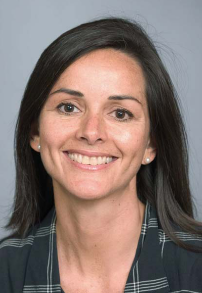 |
| Ira Ockene, MD |
An inexpensive, culturally sensitive diabetes prevention program created by researchers at UMass reduced pre-diabetes indicators in a Latino population at risk for developing diabetes. Results of this three-year study, which were published online yesterday in the American Journal of Public Health, are significantbecause they replicate results of similar studies that were carried out in more educated and higher-income populations, and much more expensive to conduct. The model for the Lawrence intervention could provide an affordable approach for similar low-income populations.
The Lawrence Latino Diabetes Prevention Project, a $2.6 million clinical trial funded by the National Institute of Diabetes and Digestive and Kidney Diseases in 2004, brought together an array of community groups in Lawrence to introduce weight control, nutrition and exercise programs to Lawrence Latinos who were at risk for developing type 2 diabetes.
The study was conducted by principal investigator Ira Ockene, MD, the Barbara D. Milliken Professor of Preventive Cardiology and professor of medicine, Milagros Rosal, PhD, associate professor of medicine, and other colleagues from UMass Chan and UMass Lowell (see sidebar). In addition to the researchers, the Greater Lawrence Family Health Center, the Lawrence Senior Center and the YWCA of Greater Lawrence were essential community partners.
“The study results are important as they suggest that small reductions in weight may reduce the risk of diabetes in some ethnic populations that have a high risk for developing diabetes, such as disadvantaged Latinos,” said Dr. Rosal.
The goal of the study was to test a community-based, literacy-sensitive and culturally tailored lifestyle intervention among low-income, Spanish-speaking Latinos with increased risk for diabetes. More than 300 participants, each of whom was followed for one year, were randomly assigned to lifestyle intervention care or usual care between 2004 and 2007.
 |
| Milagros Rosal, PhD |
The intervention was implemented by trained Spanish-speaking individuals from the community who shared the culture of the study participants. They used a 16-session curriculum that included cooking and exercise classes and strategies for food shopping and eating out in restaurants, as well as education about diabetes, the risk factors for developing it and the consequences of having it.
Unique aspects of the program included a soap opera that illustrated common attitudes and lifestyles of Latinos and desirable changes toward a healthier lifestyle, and a food guide that helped people distinguish between healthy, less healthy and unhealthy foods in accordance with the colors of a traffic light (green=healthiest; yellow=caution; red=avoid or eat in very small amounts and infrequently). Participants discussed the content of the soap opera and applied their knowledge of foods during cooking classes that emphasized modifying ethnic recipes to make them healthier, rather than eating unfamiliar foods.
Participants were encouraged to increase intake of whole grains and non-starchy vegetables and reduce the intake of sodium, total and saturated fat, portion sizes and refined carbohydrates and starches, with a physical activity component that called for increasing walking by 4,000 steps per days as measure